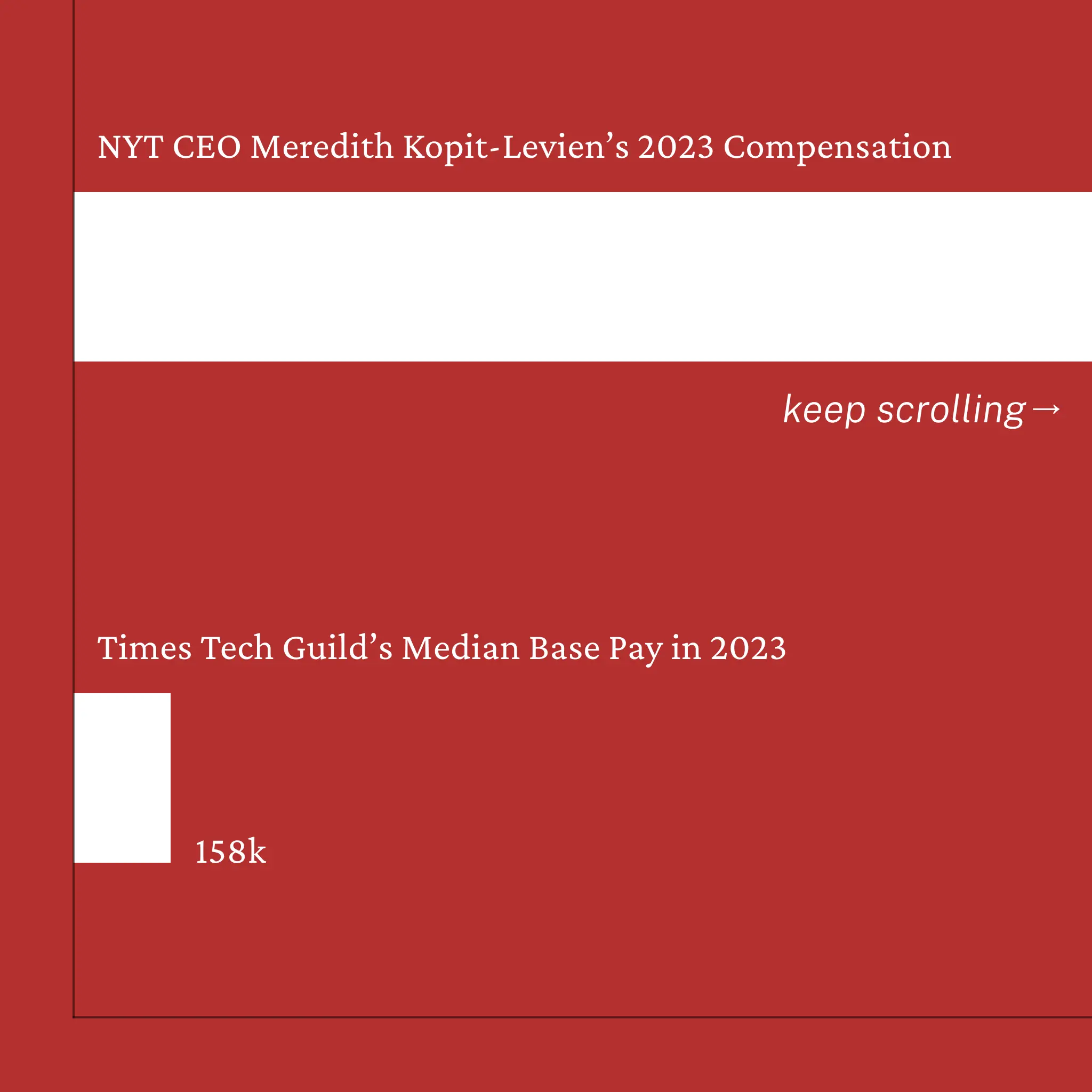New York Times: CEO gets 36% raise, employees get 3%
New York Times: CEO gets 36% raise, employees get 3%

NYT Tech Guild (@NYTGuildTech@union.place)

New York Times: CEO gets 36% raise, employees get 3%

NYT Tech Guild (@NYTGuildTech@union.place)

36% doesn't tell a clean story. How many dozens of percentage raise would workers get if that CEO's raise was evenly distributed?
Here's what I came up with.
Using Meredith Kopit-Levien's annual pay from the New York Times, at $10.2 million (as stated in the graph.) Then pluging in the 36% raise she was 'given' in 2024(?) and divide by 600 Times Tech Guild members. The following is what I got.
Base salary: $10.2 million 36% of $10.2 million = $10.2 million × 0.36 = $3.672 million $3.672 million ÷ 600 = $6,120 per person
Current average salary: $158,000 (using what was stated in the graph) Potential raise: $6,120 Percentage increase = ($6,120 ÷ $158,000) × 100 = 3.87%
So if the value of the 36% raise ($3.672 million) were distributed equally among the 600 guild members: Each member would receive a $6,120 raise This would represent approximately a 3.87% increase to their current average salary.
Or, to put it another way, at baseline, the CEO does the work of 64 people (10.2m/148k). And after raises, the CEO does the work of 85 people (13.9m/163k).
Wow, what a real bootstrapper. I stand in awe.
I mean there certainly are some CEOs that do sound like 85 assholes whenever they open their mouth. Elon Musk comes to mind as a good public example.
So they could have doubled everyone's wage increase with that amount.
I see this possibly as this scenario perhaps. boss went 3 for you, 3 for me, 3 for you, 3 for me, 3 for you, 3 for me...
Does it matter?
That depends on your values. If your values say quantifying how much workers stand to gain if they shut down exorbitant C-suite wages, then good for you.
In most cases decreasing the CEO wage increase to increase workers would only increase workers wages by a tiny amount. That's almost never the point. The point is that giving the CEO a bigger raise than the workers is a mockery of who actually produces anything.